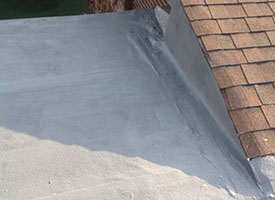
Commercial flat roofs require regular maintenance and preventive care to avoid costly repairs and extend their lifespan. By implementing proper inspection routines and addressing minor issues early, building owners can save thousands of dollars on unnecessary flat roof repair services while protecting their valuable property investment.
Armor Commercial Roofing is proud to provide high quality commercial roofing services, including flat roof repair, to the business owners and property managers in the Bronson, MI area. To schedule your consultation, call our experts at 517-617-6953.
Maintenance Tips
Regular Professional Inspections
Schedule comprehensive roof inspections at least twice per year with qualified commercial roofing contractors. Professional inspectors can identify potential problems before they become serious issues. They’ll examine seams, flashings, drainage systems, and the overall membrane condition. Spring and fall inspections allow you to address seasonal damage and prepare for extreme weather conditions.
Maintain Clean Drainage Systems
Proper drainage is critical for flat roof performance. Clear all drains, gutters, and downspouts of leaves, debris, and other blockages monthly. Standing water can add significant weight stress and accelerate membrane deterioration. Install drain guards to prevent clogging while still allowing water to flow freely. Check that all drains remain properly secured to the roof surface.
Address Ponding Water Immediately
Ponding occurs when water remains on the roof surface for more than 48 hours after rainfall. This indicates drainage problems that require prompt attention. Ponding can lead to premature aging, membrane damage, and eventual leaks. Consider adding auxiliary drains or adjusting the roof slope to eliminate areas where water collects.
Repair Minor Damage Promptly
Small punctures, tears, or separated seams should be repaired as soon as they’re discovered. These minor issues can quickly escalate into major problems if left unaddressed. Keep detailed records of all repairs, including locations, dates, and materials used. This documentation helps track problem areas and plan for eventual roof replacement.
Control Roof Traffic
Minimize unnecessary foot traffic on the roof surface. Create designated walkways using protective materials for areas requiring regular access. Train maintenance personnel on proper roof safety and protection protocols. Post appropriate signage indicating approved access routes and restricted areas.
Maintain Building Environment
Internal building conditions affect roof performance. Ensure proper ventilation to prevent excess moisture accumulation. Maintain HVAC systems to avoid chemical exhaust damage to the roof membrane. Address any interior leaks promptly to prevent insulation damage and deterioration of the roof structure.

Schedule Professional Maintenance
Establish a regular maintenance program with a qualified commercial roofing contractor. Professional maintenance may include membrane cleaning, seam inspection, minor repairs, and drainage system service. These preventive services help identify and address potential problems before they require expensive repairs.
Local Flat Roof Repair Specialists
By following these essential maintenance practices, building owners can significantly reduce the need for major commercial flat roof repair services. Regular inspections, prompt attention to minor issues, and professional maintenance help ensure maximum roof performance and longevity. Remember that investing in prevention typically costs far less than emergency repairs or premature roof replacement.
Contact Armor Commercial Roofing at 517-617-6953 to develop a comprehensive maintenance plan tailored to your Bronson, MI building’s specific needs. Professional guidance helps protect your roof investment while maintaining a safe, dry environment for building occupants and contents.
Frequently Asked Questions About Commercial Flat Roof Maintenance
Q: How often should I inspect my commercial flat roof?
Professional inspections should be conducted at least twice yearly, typically in spring and fall. However, additional inspections are recommended after severe weather events or if you notice any interior leaks. Monthly visual inspections by maintenance staff can help identify obvious issues between professional assessments.
Q: What are the warning signs of potential roof problems?
Key warning signs include:
- Bubbling or blistering in the roof membrane
- Standing water that remains for more than 48 hours
- Visible cracks or tears in the roofing material
- Interior water stains or drips
- Musty odors in upper floors
- Unexplained increase in energy bills
Q: How long should a commercial flat roof last?
The lifespan varies depending on the roofing material, installation quality, and maintenance routine. Typically, commercial flat roofs last:
- Built-up roofing (BUR): 15-20 years
- Modified bitumen: 20-30 years
- EPDM rubber: 20-35 years
- TPO and PVC: 20-30 years
Regular maintenance can help achieve maximum lifespan potential.
Q: Can I perform roof maintenance myself?
While basic visual inspections and debris removal can be performed by maintenance staff, professional contractors should handle most maintenance tasks. Professional roofers have the proper training, equipment, and expertise to safely work on commercial roofs while avoiding accidental damage or warranty violations.
Q: What makes flat roof maintenance different from sloped roofs?
Flat roofs require more frequent maintenance due to their unique challenges:
- Limited natural drainage requiring proper system maintenance
- Greater exposure to UV radiation and weather elements
- More susceptible to ponding water
- Different membrane materials requiring specialized care
- Higher foot traffic for HVAC and equipment maintenance
Q: When should I consider replacing rather than repairing my flat roof?
Consider replacement if:
- The roof is approaching the end of its expected lifespan
- Repairs are needed frequently
- More than 25% of the roof area is damaged
- Multiple layers of roofing are already present
- Energy costs are consistently rising due to poor roof performance
